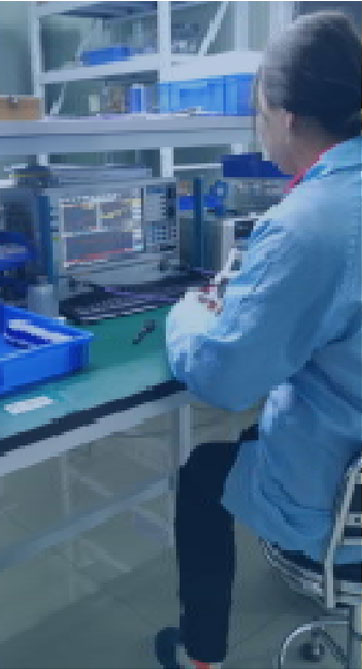
Pin diodes are established as major constituents in high-frequency electronics due to their natural device characteristics Their capability to switch quickly between conductive and non-conductive states combined with low capacitance and insertion loss makes them suitable for switches modulators and attenuators. The primary process that governs PIN diode switching is the modulation of current by varying the applied bias. Applying bias shifts the depletion-region extent within the p–n junction and so modifies conductivity. Modifying the applied bias permits PIN diodes to function at high frequencies with minimal signal distortion
Precise timing and control requirements often lead to the integration of PIN diodes into intricate circuit designs They may be applied in RF filtering arrangements to selectively pass or reject particular frequency bands. Their strong signal handling properties make them practical for amplifier power divider and signal generation uses. The trend toward miniaturized highly efficient PIN diodes has broadened their applicability in modern technologies like wireless communications and radar
Coaxial Switch Design and Performance Analysis
Engineering coaxial switches requires meticulous handling of diverse design variables Switch performance is contingent on the kind of switch operational frequency and its insertion loss attributes. Superior coaxial switch design seeks minimal insertion loss alongside strong isolation between ports
Evaluation focuses on quantifying return loss insertion loss and interport isolation as major metrics. Assessment employs simulation, analytical modeling and experimental measurement techniques. Thorough analysis is critical for confirming reliable coaxial switch performance
- Simulation tools analytical methods and experimental techniques are frequently used to study coaxial switch behavior
- Temperature fluctuations impedance mismatch and manufacturing inconsistencies can strongly alter switch performance
- Innovative trends and recent advances in switch design emphasize metric improvements while lowering size and consumption
Strategies to Optimize LNA Performance
Tuning LNA gain efficiency and performance parameters is essential for outstanding signal fidelity in diverse systems The process needs precise choice of transistors bias points and topology design. High quality LNA layouts suppress noise sources and deliver amplified signals with limited distortion. Design evaluation relies heavily on simulation and modeling tools to measure noise effects of various choices. Targeting a small Noise Figure quantifies how well the amplifier keeps the signal intact against intrinsic noise
- Selecting devices that exhibit low intrinsic noise is a primary consideration
- Setting proper and optimal bias parameters is necessary to suppress noise in active devices
- Topology of the circuit strongly affects total noise performance
Techniques like impedance matching noise cancellation and feedback control can further elevate LNA performance
PIN Diode Based RF Switching and Routing

PIN diode switching mechanisms deliver versatile and efficient RF path routing across designs These semiconductors can be rapidly switched on or off allowing dynamic path control. PIN diodes’ low insertion loss and good isolation preserve signal quality through switching events. They are commonly used in antenna selection duplexers and phased array RF antennas
The switching behavior is governed by voltage driven modulation of the diode’s resistance. While in the off state the diode creates a high impedance path that blocks the signal flow. A positive bias drives the diode into lower resistance so RF energy can pass through
- Moreover furthermore additionally PIN diode switches provide quick switching low energy use and small form factors
Various architectures configurations and designs of PIN diode switching networks enable complex routing operations. Through interconnection of switches one can construct dynamic matrices for adjustable signal path routing
Coaxial Microwave Switch Testing and Evaluation

Extensive testing and evaluation are important to ensure coaxial microwave switches operate optimally in complex systems. Multiple determinants including insertion reflection transmission loss isolation switching speed and operating bandwidth shape performance. An exhaustive evaluation procedure measures these parameters across varied operating environmental and test conditions
- Further the testing should consider reliability robustness durability and capability to withstand harsh environmental factors
- The end result of a solid evaluation produces essential valuable and critical data to support selection design and improvement of switches for defined applications
Comprehensive Survey on Minimizing LNA Noise
Low noise amplifier circuits are central to RF systems for enhancing weak signals and limiting internal noise. The review provides a comprehensive examination analysis and overview of noise reduction techniques for LNAs. We investigate explore and discuss chief noise sources including thermal shot and flicker noise. We examine noise matching feedback loop designs and bias optimization techniques for noise mitigation. The review underlines recent breakthroughs like innovative materials and circuit architectures that achieve lower noise figures. Through detailed coverage of noise reduction principles and techniques the article aids researchers and engineers in crafting high performance RF systems
High Speed Switching Applications for PIN Diodes

PIN diodes have exceptional unique remarkable properties that suit high speed switching applications Minimal capacitance and low resistance support rapid switching speeds for applications needing accurate timing. Moreover PIN diodes exhibit linear proportional responses to applied voltage enabling precise amplitude modulation and switching control. Their adaptable flexible and versatile nature makes them suitable applicable and appropriate for broad high speed applications Use cases cover optical communications microwave circuitry and signal processing devices and equipment
Coaxial Switch IC Integration and Circuit Switching
Integrated coaxial switch circuits offer advancement in signal routing processing and handling across electronic systems circuits and devices. The ICs are designed to direct manage and control coaxial signal flow offering high frequency operation and reduced propagation insertion latency. Integrated circuit miniaturization creates compact efficient reliable and robust designs favorable for dense interfacing integration and connectivity use cases
- By rigorously meticulously and carefully implementing these techniques practitioners can achieve LNAs with remarkable noise performance for sensitive reliable electronics By meticulously carefully and rigorously applying these methods developers can produce LNAs with superior noise performance enabling sensitive reliable electronics By meticulously carefully low-noise amplifier and rigorously adopting these practices designers can deliver LNAs with excellent noise performance supporting reliable sensitive systems By meticulously carefully and rigorously adopting these practices designers can deliver LNAs with excellent noise performance supporting reliable sensitive systems
- Use cases include telecommunications data communications and wireless network infrastructures
- These technologies find application in aerospace defense and industrial automation fields
- Consumer electronics audio video systems and test and measurement platforms incorporate IC coaxial switches
Considerations for LNA Design at Millimeter Wave Frequencies

At mmWave frequencies LNAs must contend with greater signal attenuation and intensified influence from noise sources. Parasitic effects are dominant at mmWave thus careful layout techniques and component choices are crucial. Minimizing mismatch and maximizing gain remain critical essential and important for mmWave LNA performance. Devices such as HEMTs GaAs MESFETs and InP HBTs are important selections to meet low noise figure goals at mmWave. Moreover additionally furthermore the development implementation and tuning of matching networks plays a vital role in ensuring efficient power transfer and impedance match. Consideration of package parasitics is required because they may adversely impact LNA performance at mmWave. The use of low-loss lines and careful ground plane planning is essential necessary and important to limit reflections and sustain bandwidth
PIN Diode Behavior Modeling for RF Switching
PIN diodes perform as significant components elements and parts across various RF switching applications. Comprehensive accurate and precise characterization of these devices is essential to enable design development and optimization of reliable high performance circuits. This includes analyzing evaluating and examining their electrical voltage and current characteristics like resistance impedance and conductance. Frequency response bandwidth tuning capabilities and switching speed latency or response time are also characterized
Furthermore moreover additionally accurate model and simulation development for PIN diodes is vital essential and crucial for behavior prediction in RF systems. Various numerous modeling approaches including lumped element distributed element and SPICE models are applicable. Selecting an appropriate model simulation or representation depends on the specific detailed application requirements and the desired required expected accuracy
Innovative Advanced Techniques for Low Noise Amplifier Engineering
LNA design is a critical undertaking that demands precise attention to topology and parts selection to achieve low noise. New and emerging semiconductor advances have led to innovative groundbreaking sophisticated design techniques that lower noise substantially.
These techniques often involve employing utilizing and implementing wideband matching networks adopting low-noise high intrinsic gain transistors and optimizing biasing schemes strategies or approaches. Further advanced packaging approaches together with thermal management methods play a vital role in minimizing external noise contributions. By carefully meticulously and rigorously applying these approaches designers can realize LNAs with outstanding noise performance enabling sensitive reliable electronic systems
